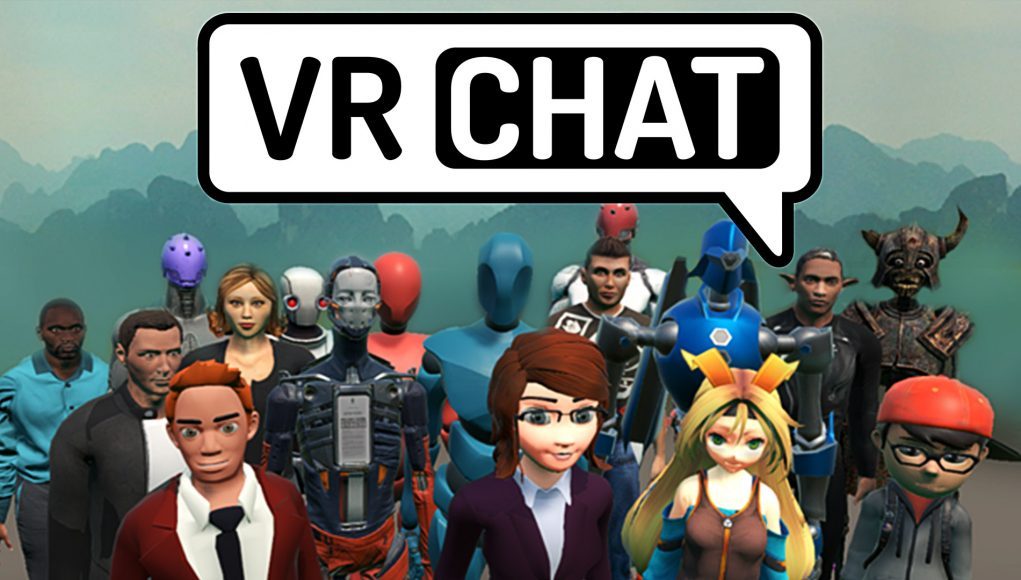Ready Player One was released on March 29th, and the current VR experience that comes the closest to realizing the vision of the OASIS depicted in the movie is the social VR experience of VRChat. By 2045, I predict that we’ll have a decentralized open metaverse that’s built on WebXR, and that it’ll be the open web that realizes the educational potential of OASIS that’s depicted within the novel version of Ready Player One. But I think we’ll continue to have open and closed systems just as we do today, and it’s likely that there will a closed, walled garden metaverse of interconnected worlds that is more akin to the vision of the OASIS that’s built by Gregarious Simulation Systems. But if you want to experience the OASIS today, then VRChat is the experience to check out.
LISTEN TO THE VOICES OF VR PODCAST
I had a chance to talk with VRChat’s CEO and co-founder Graham Gaylor and Chief Creative Ron Millar at GDC where we talked about the recent growth of VRChat, what type of trends they’re seeing, what they’re doing to support streamers, and where they’re going in the future.
VRChat was one of the first social VR experiences to enable fully customizable avatars, but they also allow creators to upload their own worlds. VRChat went through some exponential grown in the Fall of 2017 thanks in part to a number of YouTubers including Jameskii & Nagzz21, and Twitch personalities like pokelawls, dyrus, greekgodx, and LIRIK who discovered the unique user-generated VRChat worlds, customized avatars, a fusion of pop culture references & memes, as well as opportunities for live action role play, cosplay, social games, and serendipitous social interactions in these virtual worlds.
VRChat has the most advanced friend-finding features of any Social VR experience, but they also have the user experience of traversing between virtual worlds with a group of people by dropping in-world portals. They also have a diverse range of different private social VR experiences including invite-only instances or instances where anyone invited can invite their friends.
VRChat has enabled a 2D desktop version of their experience allows non-VR PC players to participate in the social VR worlds, but with limited functionality including not being able to use their hands. Not all of the concurrent users on VRChat are in virtual reality, but it’s an experience that’s been inspiring a lot of people to buy a VR system in order to enhance their experience in the game. This support for non-VR participation has contributed to their rise in popularity, and this success means that they’ve had to deal with various moderation challenges that come with operating virtual social spaces at this scale.
There aren’t any VR experiences yet that realize the full potential of the ‘OASIS’, the VR metaverse depicted in the novel Ready Player One, as there are a lot more educational aspects to the OASIS that didn’t make the cut for the movie version. I think that it’s most likely the these types of educational experiences will be built on the open web using open standards like WebXR, and currently Google’s Expeditions is the probably the closest platform that is realizing the more educational aspects of the OASIS. It was encouraging to hear the Google Expeditions team talk about using A-Frame to build experiences that target the web, and so by 2045 I expect that there will be a combination of centralized walled gardens as well as decentralized open metaverse worlds that are built upon open standards like WebXR.
VRChat has opted to create the best experiences possible today by creating a centralized solution where they are hosting all of the content, and they’re in charge of moderating content and social behaviors. The long-term business model for VRChat hasn’t been announced to the community yet, but Chief Creative Officer Ron Millar told me that they want to be sure that there’s a way for the most successful content creators to be compensated for their creations.
 CEO Graham Gaylor said that VRChat is open to exploring various decentralized solutions if it’s something that the community of users starts to ask for, but they’re currently focused on creating the best user experience that’s possible using the technologies that are out there. They’ve been focused on supporting Unity with their SDK which has allow existing VR creators to jump into creating worlds for VRChat.
CEO Graham Gaylor said that VRChat is open to exploring various decentralized solutions if it’s something that the community of users starts to ask for, but they’re currently focused on creating the best user experience that’s possible using the technologies that are out there. They’ve been focused on supporting Unity with their SDK which has allow existing VR creators to jump into creating worlds for VRChat.
AltspaceVR actually put a lot of engineering effort to be able to integrate the open web into their platform. JanusVR has the most advanced implementations of seamlessly integrating with the open web, and Philip Rosedale’s High Fidelity has always taken a hybrid approach of blending together a centralized and decentralized approach. An updated version of the networked A-Frame plug-in was just released, and it should provide a foundation for social VR experiences on the open web. These more decentralized solutions take more time, effort, and energy to design experiences for, and they’re using web technologies that still aren’t consistently at a level of quality that native applications can run. High Fidelity is probably the closest to achieving experience parity with their framework that’s built using JavaScript as the primary coding language, but it still doesn’t have the same consistency or quality as native code—even though it’s rapidly improving all the time.
It’ll be interesting to see how VRChat continues to grow and expand, and they have a publicly listed set of feature requests listed on their VRChat feedback page that provides a sense of their roadmap and popular feature requests. After WebXR 1.0 launches later this year, then I expect to see some of the more decentralized open web approaches to start to rapidly improve, but I expect that it is still going to take a number of years before these open web experiences will be able to catch up to the quality of the social VR experience that is currently provided by VRChat.
But Rosedale believes in the power of Metcalf’s Law, which says that the value of a network increases with the square of the nodes that are included in this network. This means that as more people start creating experiences for the open web, then the network effects start to make the value of the open web exponentially more valuable. Rosedale expects to see the evolution of the metaverse mirror what happened when people started to use the open web over the more curated and polished, centralized walled gardens of AOL, Compuserve, and CD-ROMS.
The recent privacy backlash against centralized companies like Facebook is an indication that the general public is starting to realize the dangers of a centralized entity growing to the scale of billions of users, and the antidote is decentralized architectures that protect user privacy. Chris Dixon’s essay “Why Decentralization Matters” documents how most of the VC funding and smartest entrepreneurs in Silicon Valley are starting to build decentralized systems based on the blockchain, and so there’s a larger trend in the tech industry that’s starting to focus more on building a more viable decentralized economy that’s not as susceptible to a handful of centralized players like Facebook or Google from completely dominating the online ad marketplace thanks to their business models of surveillance capitalism.
Another recent announcement at GDC was High Fidelity & JanusVR announced the Virtual Reality Blockchain Alliance that emphasizes portable identities, registering assets, and acceptance of virtual currencies. It’s these types of decentralized architectures that are more forward-looking, and are building for the future, but VRChat’s Gaylor says that it has taken these companies a lot longer to build a user experience that’s been as compelling as what VRChat has been able to create. VRChat has opted for pushing the boundary as to what is even possible that inspires the decentralized solutions to have a design goal.
So in conclusion, I think that VRChat is still the closest VR experience that exists today that starts to realize the vision of the OASIS depicted in the Ready Player One movie, but I suspect that by 2045 that the open web built on top of the WebXR open standards are going to realize the full vision of the open metaverse and the educational potential of the OASIS that’s depicted within the novel. Both are important parts of creating the social VR metaverse that we all want to see in the future, and hopefully the dystopian sci-fi visions of the future depicted in Ready Player One can help us recognize the downfalls of centralized power, and inspire us to build an open and sustainable metaverse on a decentralized architecture that we all deserve.
Support Voices of VR
- Subscribe on iTunes
- Donate to the Voices of VR Podcast Patreon
Music: Fatality & Summer Trip







